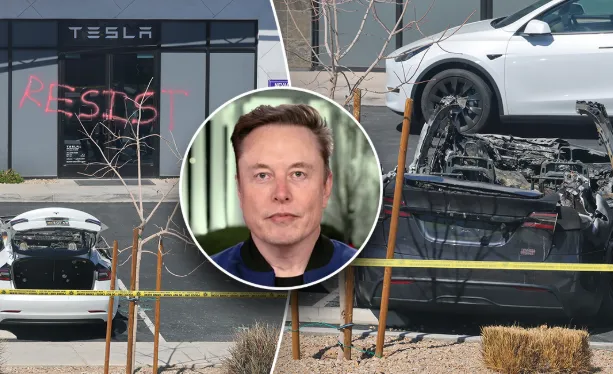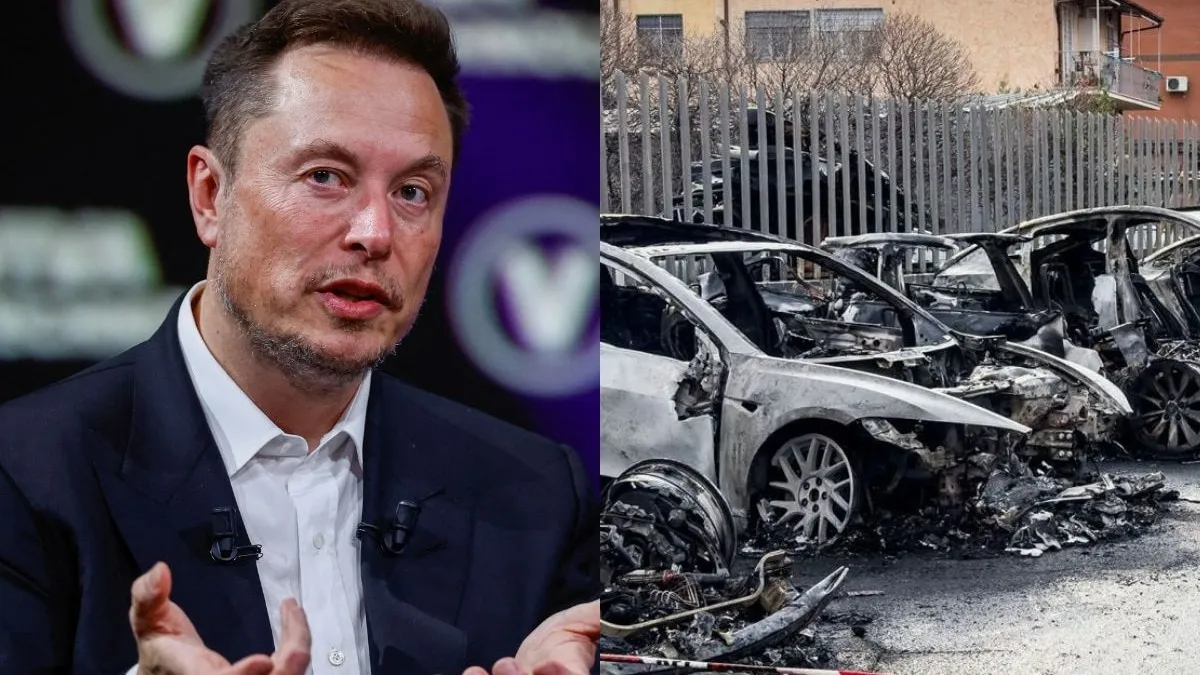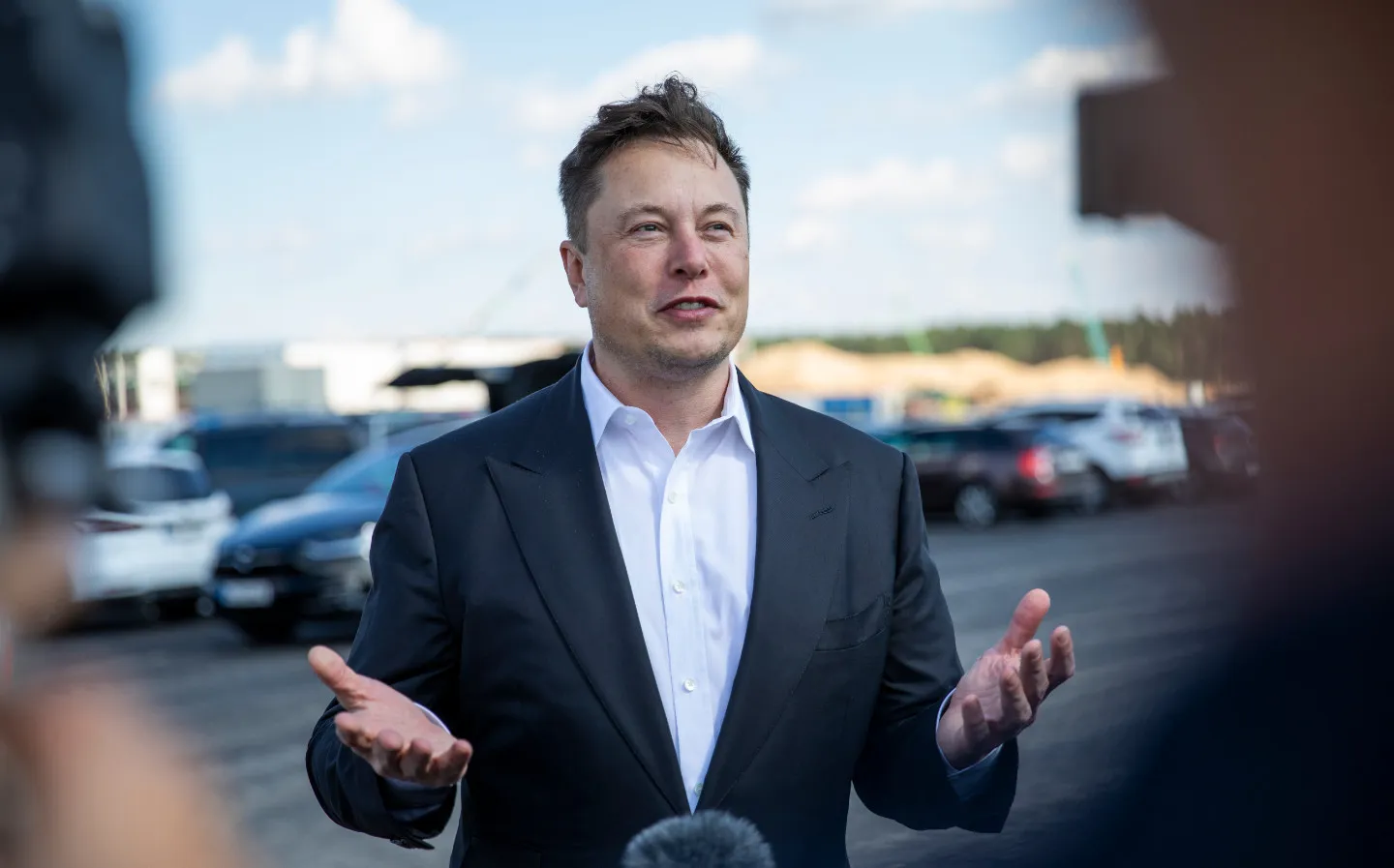

Tesla Takedown and the Wave of Outrage: Why Are Tesla Cars Being Attacked Globally and What Can Elon Musk Do to Save His Brand?
In recent years, Tesla has emerged as a pioneer in the electric vehicle (EV) market, disrupting the automotive industry and pushing forward the transition to sustainable energy. Elon Musk’s vision for the company has propelled Tesla into global prominence, making it one of the most valuable companies in the world. However, with success comes scrutiny, and in recent months, Tesla and its products have become the target of attacks on a global scale. From dealerships and charging stations to the vehicles themselves, Tesla’s infrastructure has faced a wave of sabotage and vandalism. This rise in targeted attacks has left many questioning the motivations behind these incidents and what they mean for the future of the electric vehicle giant.
Tesla Dealerships Under Siege: Vandalism and Sabotage on the Rise
Tesla dealerships have always been more than just places where customers can purchase vehicles; they represent a key part of the company’s brand and direct relationship with consumers. However, in several countries, Tesla showrooms have become targets of vandalism and sabotage, as tensions surrounding the company’s rise in power escalate.

Reports from various regions indicate that Tesla dealerships have been targeted by groups or individuals who are either protesting against Elon Musk’s leadership or seeking to damage the company’s reputation. In some cases, windows have been smashed, graffiti with anti-Musk slogans has been sprayed on dealership walls, and vehicles on display have been damaged or vandalized. These attacks have raised alarm bells, not just for Tesla but for the broader automotive industry, as they signal a growing level of hostility toward the electric car giant.
The motives behind these acts are multifaceted. Some critics argue that the attacks are a reaction to the immense success Tesla has achieved under Musk’s leadership. As Tesla continues to dominate the electric vehicle market, traditional automakers who have invested billions into their own EV projects may feel threatened by the company’s success. With Tesla’s rapid expansion and the significant media attention surrounding Musk, there is a growing resentment among certain factions of the automotive industry, and some may see these attacks as a way to undermine the company’s success.
In other instances, the motivations behind the vandalism seem to be more political in nature. Musk’s personal opinions and actions, both on social media and in the business world, have drawn a range of supporters and detractors. While many Tesla enthusiasts admire Musk for his innovation and vision, others are deeply critical of his views and actions, leading to a divide in public opinion. For some, damaging Tesla dealerships may be a symbolic act of protest against Musk’s controversial leadership style and the attention he garners.
Regardless of the reasons behind these attacks, the impact on Tesla’s operations cannot be ignored. Dealerships serve as a vital point of contact between the company and its customers, and any disruption to these centers of commerce can have ripple effects throughout the business. If the trend of attacks on dealerships continues, Tesla may be forced to rethink its approach to retail operations, increasing security and reassessing its physical locations worldwide.
Tesla Charging Stations: The Target of Sabotage and Destruction
Tesla’s network of Supercharger stations has played a crucial role in enabling the widespread adoption of electric vehicles. These charging stations are designed to provide quick, efficient, and accessible charging for Tesla owners, allowing them to travel long distances without worrying about finding a charging spot. However, the rise in attacks on Tesla’s charging stations worldwide has become a troubling trend that poses a significant challenge to the company.
In some instances, Tesla’s charging infrastructure has been directly targeted by saboteurs. These acts of vandalism typically involve damaging charging ports, disabling equipment, or intentionally disrupting the power supply. In other cases, charging stations have been set on fire, leaving Tesla owners without access to a crucial part of their driving experience. These attacks seem to be designed not only to disrupt Tesla’s ability to deliver on its promises but also to send a message about the company’s perceived power and influence.
The motivations behind these attacks on charging stations are complex, but they likely reflect a growing level of animosity toward the company. As Tesla’s electric vehicles become more ubiquitous, the network of Supercharger stations continues to expand, increasing the company’s reach and dominance. Some individuals or groups may view this expansion as a threat, particularly if they are aligned with traditional automotive manufacturers or have a vested interest in the success of fossil fuel-based transportation.
Additionally, the attacks on Tesla’s charging infrastructure can be seen as an extension of the broader backlash against Musk’s leadership style and public persona. Musk’s controversial behavior, his frequent use of social media, and his stance on various social and political issues have made him a polarizing figure. For some, the attacks on charging stations may be a way to strike at the core of Tesla’s ability to operate efficiently and effectively.
In the face of these challenges, Tesla may need to invest heavily in security measures to protect its charging infrastructure. This could include everything from installing surveillance cameras at charging stations to implementing more robust anti-tampering technology. If the attacks on Tesla’s charging stations continue or escalate, the company will be forced to address the vulnerabilities in its infrastructure to ensure that its customers can continue to rely on the Supercharger network.
Tesla Vehicles: The Growing Target of Physical Attacks and Sabotage
Tesla vehicles themselves have also become targets of attacks in various parts of the world. In some high-profile cases, Tesla owners have reported incidents of their vehicles being intentionally damaged or sabotaged. From keying the cars to smashing windows, the physical damage inflicted on Tesla vehicles has raised serious concerns about the growing hostility directed at the company and its products.
In certain regions, attacks on Tesla vehicles have been more organized, with entire fleets of cars targeted in a single incident. These acts of sabotage are often motivated by anger toward Tesla and Elon Musk, as well as the growing dominance of electric vehicles in the automotive market. For some, these attacks represent an effort to undermine the company’s success, even if it means resorting to criminal behavior.
Interestingly, many of these attacks seem to be driven by a perception that Tesla represents something larger than just a car company. As Musk’s influence expands, so too does the cultural impact of Tesla and the electric vehicle movement. Some view Tesla as a symbol of technological progress, while others see it as a threat to the status quo of traditional car manufacturing. This divide is reflected in the attacks on Tesla vehicles, with some people choosing to vandalize or sabotage the cars as a way to express their discontent with what they see as Musk’s dominance in the industry.
While the reasons behind these attacks are multifaceted, the bottom line is that they represent a serious threat to Tesla’s reputation and its ability to maintain a positive relationship with its customers. If Tesla continues to be targeted in this way, it may need to increase efforts to protect its vehicles and work with local authorities to ensure that those responsible for these acts of vandalism are held accountable.

The Future of Tesla: Navigating Challenges and Building Resilience
Tesla’s rise to prominence has been marked by incredible success, but with that success has come increased scrutiny and backlash. As the company continues to expand and innovate, it will undoubtedly face more challenges, including the growing hostility directed at its dealerships, charging stations, and vehicles. However, Tesla has proven time and time again that it is capable of overcoming adversity and emerging stronger.
To address the ongoing attacks on Tesla’s infrastructure, the company will need to take a proactive approach. This could include increasing security measures, investing in better surveillance technologies, and working with local law enforcement to prevent further incidents. In addition, Tesla may need to rethink its approach to customer relations, ensuring that it remains connected with its customer base and continues to deliver on its promises of innovation and sustainability.
As Tesla navigates these challenges, the company’s ability to adapt and remain resilient will determine its long-term success. While the attacks on its infrastructure are a clear indication of the growing tensions surrounding the company, they also present an opportunity for Tesla to demonstrate its strength and commitment to its mission. If the company can overcome these hurdles, it may find that its reputation as a pioneer in the electric vehicle industry only grows stronger.
In conclusion, the attacks on Tesla’s dealerships, charging stations, and vehicles represent a significant challenge for the company. While these incidents are troubling, they also reflect the growing influence and impact of Tesla and Elon Musk’s vision. Whether these attacks are fueled by resentment, political motivations, or industry competition, one thing is clear: Tesla’s future will depend on its ability to navigate these challenges and continue to innovate in the face of adversity. The world will be watching closely to see how the company responds to these threats and what steps it takes to protect its infrastructure and maintain its leadership in the electric vehicle market


















